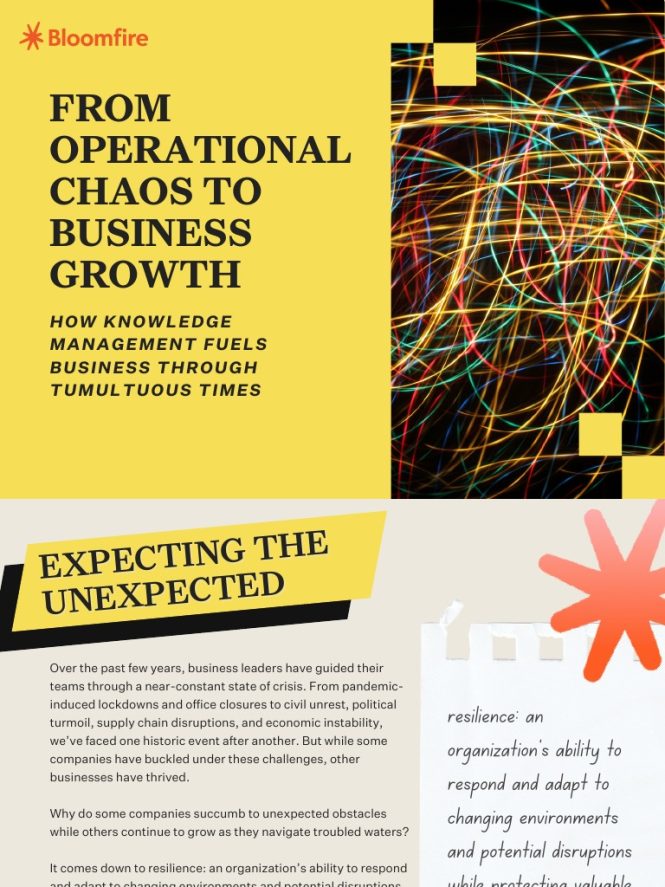

Conquering operational inefficiencies is paramount for sustainable business growth. Imagine a business effortlessly navigating daily tasks, minimizing wasted resources, and consistently exceeding targets. This article dives deep into the crucial strategies to achieve this operational excellence, exploring practical solutions and actionable steps. This comprehensive guide identifies common problems holding businesses back and presents proven strategies to optimize processes, reduce costs, and ultimately, enhance profitability. This article will be structured as follows: First, we’ll lay the groundwork by discussing the core issues around operational inefficiencies and why they impact growth; next, we’ll delve into practical optimization strategies. Finally, we’ll provide actionable steps for implementation and sustained improvement.
Understanding the Root Causes of Operational Inefficiencies
Operational inefficiencies are often deeply rooted in a combination of factors. Identifying these causes is the first step towards developing targeted solutions. Common culprits include: lack of clear processes, insufficient communication, poor resource allocation, inadequate technology, and employee skill gaps. For instance, a company that lacks a well-defined workflow for customer onboarding is likely to experience delays and frustrations, which ultimately impacts customer satisfaction and sales.
Implementing Lean Methodologies for Efficiency Enhancement
Lean methodologies, a structured approach to process improvement, offer powerful tools for streamlining operations and eliminating waste. These methodologies focus on identifying and removing activities that do not add value to the customer experience. One crucial element of lean is process mapping, which visually represents workflows, allowing for the identification of bottlenecks and areas for improvement. For example, a manufacturing company using process mapping to analyze its production process might discover that a step in the assembly line is unnecessarily complex, leading to wasted time and resources.
Optimizing Workflow Through Technology Integration
Technology plays a vital role in improving operational efficiency. By leveraging automation tools, businesses can streamline tasks, enhance productivity, and reduce manual errors. For example, automating data entry tasks can save considerable time and effort, allowing employees to focus on more strategic tasks. Moreover, adopting customer relationship management (CRM) systems can improve communication and collaboration between departments, leading to a more cohesive and efficient workflow.
Fostering Collaboration and Communication for Enhanced Efficiency
Effective communication and collaboration are essential for overcoming operational challenges and achieving synergy. Strong internal communication ensures that everyone is on the same page, reducing misunderstandings and avoiding costly errors. For instance, companies implementing a project management system can facilitate better collaboration among team members, streamline communication, and ensure projects stay on track.
Measuring and Monitoring Performance Indicators for Continuous Improvement
Measuring operational performance is essential for ensuring strategies are effective. Performance indicators (KPIs) provide valuable insights into areas needing improvement. Tracking KPIs helps identify trends and patterns, enabling businesses to react swiftly to emerging challenges or seize opportunities for optimization. For instance, monitoring customer satisfaction scores can reveal areas for improvement in customer service workflows or product design.
What are the long-term benefits of optimizing operational efficiency?
Optimizing operational efficiency can significantly impact businesses in the long run. The benefits include increased productivity, reduced costs, improved customer satisfaction, and enhanced profitability. These outcomes contribute to sustainable growth and competitiveness within the market. It’s a win-win scenario for both the company and its customers!
How can I effectively measure the success of my operational efficiency initiatives?
Tracking key performance indicators (KPIs) is crucial for evaluating the success of operational efficiency initiatives. The KPIs chosen will depend on the specific area being targeted for improvement. Monitoring customer satisfaction scores, tracking production output, and analyzing cost reduction metrics can provide insightful data to gauge success.
Frequently Asked Questions
What are the common pitfalls that businesses often encounter in operational efficiency?
Common pitfalls in operational efficiency include lack of clear processes, insufficient communication, poor resource allocation, inadequate technology, and employee skill gaps. Addressing these fundamental issues is vital for building sustainable efficiency within a business. Proactively identifying and mitigating these problems is essential for maximizing performance.
In conclusion, conquering operational inefficiencies is crucial for sustainable business growth. By implementing the strategies outlined in this article, businesses can optimize their processes, reduce costs, and ultimately increase profitability. Remember, continuous improvement is key. Regularly evaluate your processes, seek feedback from employees, and adapt your strategies based on the changing business landscape. Ready to take the next step in optimizing your operations? Contact us today for a free consultation!